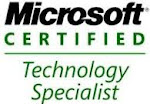While working with excel in one of my SharePoint site with
excel, I got an error as “Retrieving the COM class factory for component with
CLSID {00024500-0000-0000-C000-000000000046} failed due to the following error:
8000401a” as shown the image below
This is the issue related to permissions for excel
application in the server. We can fix the issue by the steps below.
Open Component services by entering dcomcnfg in Run.
In Component Services navigate to Component
Services->Computers->My Computer->DCOM Config->Microsoft Excel
Application. Right click and select Properties option as shown below.
Select “Identity” in top, “Which user account do you
want...” section, select “This user” and enter the account having admin control
on the machine.
In the security section, Under "Launch and Activation
Permissions", Choose "Customize", Click "Edit" button,
Add the everyone account and add all the Permissions as shown below.
Do the same thing in "Access Permissions" and
"Configuration Permissions". Now we can run excel without errors.
Hope this helps.











